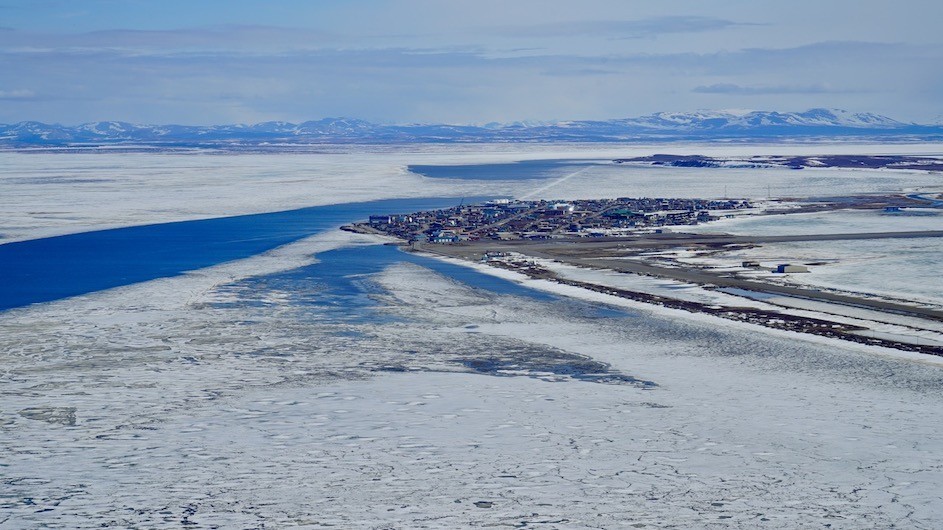More Frequent Atmospheric Rivers Are Hindering the Recovery of Arctic Sea Ice
Giant trains of warm, moist air are playing havoc with Arctic sea ice during the season when it should be recovering from summer melting.

The Arctic is rapidly losing sea ice, even during winter months, when temperatures are below freezing and ice should be recovering from the summer melt. Now, a new study in the journal Nature Climate Change has found that powerful storm systems called atmospheric rivers are partly responsible; the study finds they are increasingly reaching the Arctic in winter, slowing sea ice recovery and accounting for a third of all winter sea ice decline.
“Arctic sea ice decline is among the most obvious evidence of global warming from the past several decades,” said lead author Pengfei Zhang of Penn State University. “Despite temperatures in the Arctic being well below freezing, sea ice decline in winter is still very significant. And our research shows atmospheric rivers are one factor in understanding why.”
Atmospheric rivers carry large amounts of water vapor in narrow, ribbon-like storm systems that can stretch for a thousand miles and produce extreme rainfall and flooding when they make landfall. These storms regularly impact midlatitude coastal regions such as California, where atmospheric river events in January dropped huge amounts of rain, resulting in catastrophic flooding.
Using satellite observations and climate model simulations, the scientists found that human-induced warming has increased the rate of atmospheric river storms in the Arctic. They also found that one major mode of natural climate variability — the so-called Interdecadal Pacific Oscillation — also has contributed in recent years to atmospheric river changes. The effects are particularly evident during the winter ice-growing season in the Barents and Kara seas off the northern coasts of Norway and Russia.
“We often think that Arctic sea ice decline is a gradual process,” said study coauthor L. Ruby Leung of Pacific Northwest National Laboratory. “This study is important in that it finds sea ice decline is due to episodic extreme weather events, [which] have occurred more frequently in recent decades partly due to global warming.”
Warm moisture carried by these storms increases what scientists call downward longwave radiation — heat emitted back to the earth from the atmosphere. It also produces rain. Either phenomenon can melt the thin, fragile ice cover that normally regrows during the winter months.
Using satellite remote sensing images, the scientists observed sea-ice retreat almost immediately following atmospheric-river storms, and saw the retreat persisted for up to 10 days.
“When this kind of moisture transport happens in the Arctic, the effect is not only the amount of rain or snow that falls from it, but also the powerful melting effect on the ice,” said Mingfang Ting, a professor at the Columbia Climate School’s Lamont-Doherty Earth Observatory and a coauthor of the study.
The loss of Arctic sea ice has broad implications. Open waters are darker than ice-covered ones and thus absorb more solar energy; this process feeds on itself, amplifying warming of the polar region. Ice-free waters may open up new, more direct shipping routes, and access to minerals and other resources, but may also trigger international geopolitical struggles. Additionally, freshwater melting into the salty ocean may impact oceanic circulations patterns. The rapid loss of sea ice is bringing erosion of Arctic coastlines, disturbance to global weather patterns and disruption of Arctic communities and ecosystems, said Ting.
“This study, together with other work that noted the presence of atmospheric rivers in the tropics, highlights that atmospheric rivers represent a global phenomenon,” said Bin Guan of the California Institute of Technology, a coauthor of the study.
Also contributing to the research was Gang Chen, professor at the University of California, Los Angeles. The project received support from the U.S. National Science Foundation, NASA and the U.S. Department of Energy.
Adapted from a press release by Penn State University.
